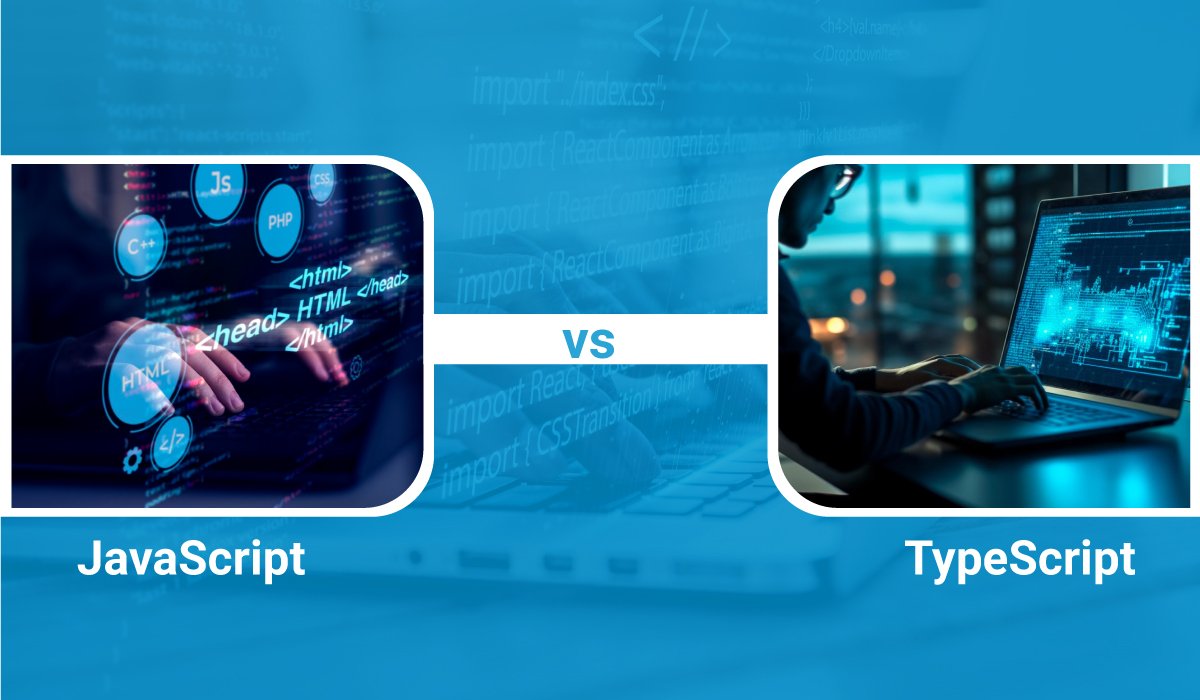JavaScript vs TypeScript: Introduction
Nowadays, A very crucial decision that developers face in the dynamic world of web development is whether to use TypeScript or JavaScript. Both languages have their merits and are widely used, but understanding the nuances and weighing the pros and cons is essential for making an informed decision. In this article, we will conduct a thorough competitor analysis, exploring the key differences between JavaScript and TypeScript, delving into their applications in JavaScript frameworks, and evaluating their impact on web development.
I. Difference between JavaScript vs TypeScript
JavaScript: The Pioneer of Web Development
JavaScript, the cornerstone of web development, has been the go-to language for creating interactive and dynamic user interfaces. With its simplicity and versatility, JavaScript allows developers to build feature-rich applications for the web. It is a client-side scripting language that runs in web browsers, enabling the creation of responsive and engaging user experiences.
Pros of JavaScript:
- Versatility: JavaScript is a versatile language suitable for both front-end and back-end development.
- Ubiquity: As the native language of web browsers, JavaScript enjoys unparalleled ubiquity.
- Large Developer Community: The vast community of JavaScript developers facilitates knowledge sharing and problem-solving.
Cons of JavaScript:
- Type System Limitations: JavaScript’s lack of a static type of system can lead to runtime errors that are challenging to catch during development.
- Scalability Challenges: In large codebases, maintaining scalability and code organisation can become complex.
- Limited Tooling: JavaScript’s tooling for large-scale applications is not as advanced as in some other languages.
TypeScript: Elevating Development with Types
TypeScript, a superset of JavaScript, was introduced to address the limitations of its predecessor. It adds static typing, interfaces, and other features, enhancing developer productivity and code quality. TypeScript code is transpiled into JavaScript, allowing seamless integration into existing projects.
Pros of TypeScript:
- Static Typing: TypeScript’s static type system helps catch errors during development, improving code robustness.
- Code Maintainability: With interfaces and strong typing, TypeScript enhances code organisation and maintainability.
- Tooling Support: TypeScript boasts robust tooling, including code completion and navigation, which aids developers in large projects.
Cons of TypeScript:
- Learning Curve: Developers familiar with JavaScript may face a learning curve when transitioning to TypeScript.
- Compilation Overhead: The additional step of compilation introduces a slight overhead in development time.
- Compatibility Challenges: Some existing JavaScript libraries may require additional efforts for seamless integration with TypeScript.
II. Bridging the Gap: JavaScript vs Typescript Frameworks
JavaScript frameworks play a pivotal role in modern web development, offering developers efficient tools and structures for building scalable applications. Let’s explore how JavaScript and TypeScript integrate with popular frameworks.
JavaScript in Frameworks:
- React.js:
React, developed by Facebook, is a JavaScript library for building user interfaces. It excels in creating dynamic and reusable UI components. JavaScript’s flexibility makes it the default language for React.js development.
- Angular:
Angular, a robust front-end one of the JavaScript frameworks by Google, uses JavaScript to build dynamic single-page applications. It employs TypeScript for added type safety and better developer experience.
- Vue.js:
Vue.js, a progressive one of the JavaScript framework, provides a flexible and incrementally adoptable structure. Developers can use JavaScript or TypeScript based on their preference.
TypeScript in Frameworks:
- Angular:
Angular’s adoption of TypeScript as its primary language enhances the framework’s capabilities. TypeScript’s features, such as decorators and interfaces, align seamlessly with Angular’s architecture.
- Vue.js:
While Vue.js primarily relies on JavaScript, developers can opt for TypeScript to leverage its static typing and enhanced tooling features. Vue.js provides excellent support for TypeScript integration.
- React.js:
React supports TypeScript through TypeScript’s JSX, enabling developers to use TypeScript in React projects. The TypeScript-React combination is increasingly popular for its benefits in large-scale applications.
III. Navigating Web Development: JavaScript Web Development and TypeScript Development Services
JavaScript Web Development:
JavaScript’s role in web development extends beyond the client side. With the advent of Node.js, JavaScript can now be used for server-side development, opening new possibilities for full-stack JavaScript development. JavaScript frameworks like Express.js facilitate the creation of robust and scalable server applications.
TypeScript Development Services:
TypeScript’s influence extends to dedicated typescript development services that cater to the growing demand for robust and scalable applications. TypeScript development services leverage the language’s features to deliver high-quality solutions.
IV. When to Choose JavaScript and TypeScript
When to Choose JavaScript
- Rapid Prototyping: For quick development cycles and prototypes, JavaScript’s flexibility and immediate feedback may be preferable.
- Small to Medium Projects: In less complex projects the benefits of static typing might not outweigh the simplicity of JavaScript.
When to Choose TypeScript
- Large Scale Projects: TypeScript shines in large projects where maintaining code quality and preventing bugs are paramount.
- Team Collaboration: In scenarios where multiple developers are working on the same codebase, TypeScript’s type system aids in communication and reduces errors.
JavaScript vs Typescript: Conclusion
The difference between JavaScript and TypeScript is not a one-size-fits-all one in the dynamic world of web development. JavaScript, with its ubiquity and flexibility, remains a powerful language for various development scenarios. On the other hand, TypeScript’s static typing and enhanced tooling appeal to developers aiming for code quality and maintainability.
In conclusion, understanding the differences between JavaScript and TypeScript is crucial for making informed decisions in the rapidly advancing field of web development. The decision ultimately hinges on project requirements, team expertise, and long-term goals. JavaScript continues to be a stalwart in web development, while TypeScript gains ground as developers recognize the value it brings to large-scale projects.
You can get in touch with Monarch Innovation if you need someone to oversee all project requirements and offer creative, dependable solutions that will exponentially boost your business’s potential for growth in the future. Monarch Innovation creates specialised solutions to assist clients in Reverse Engineering Solutions in their manufacturing processes to maximise organisational efficiency and outcome. With a staff of highly skilled individuals and cutting-edge infrastructure, Monarch Innovation has a competitive advantage in the market.
FAQs





